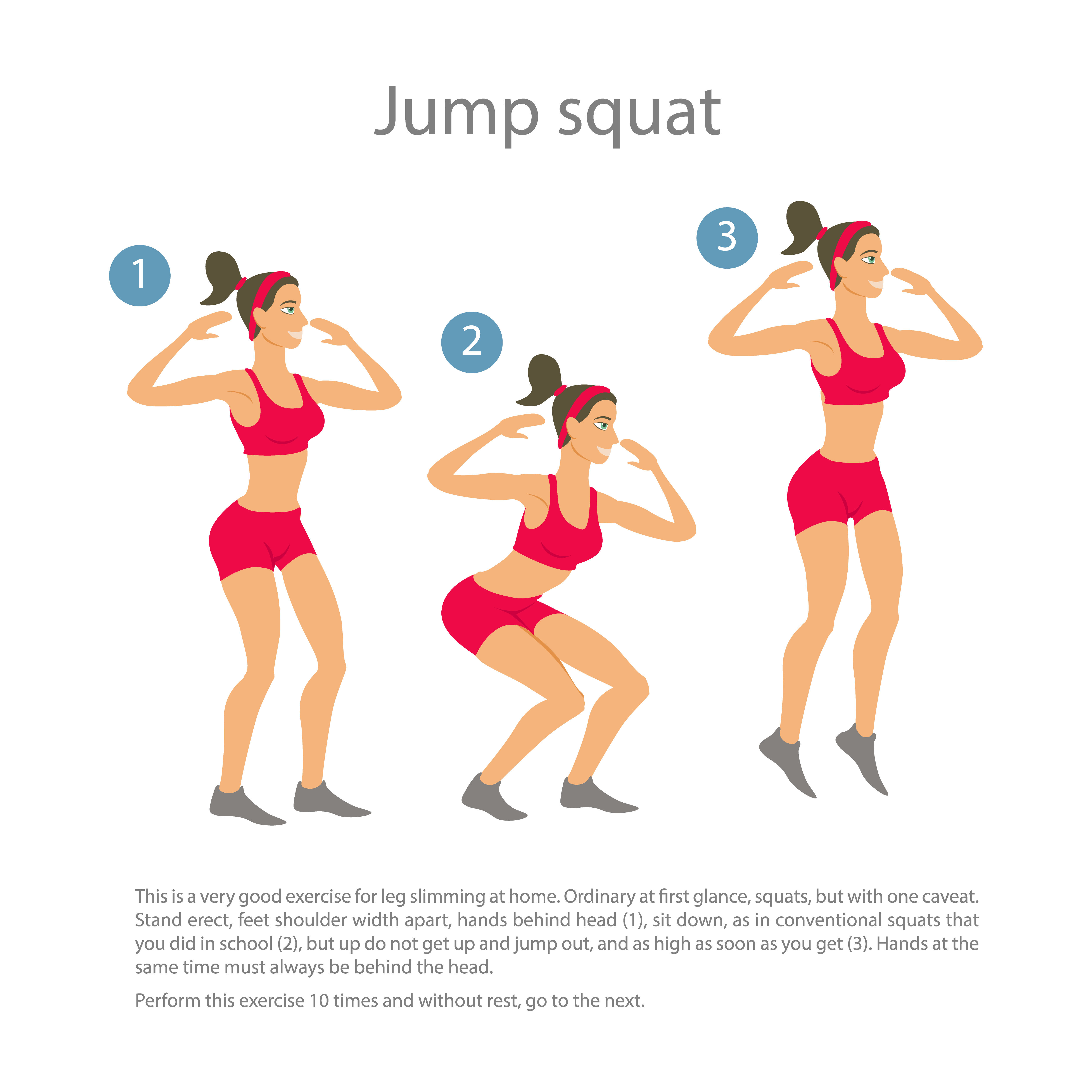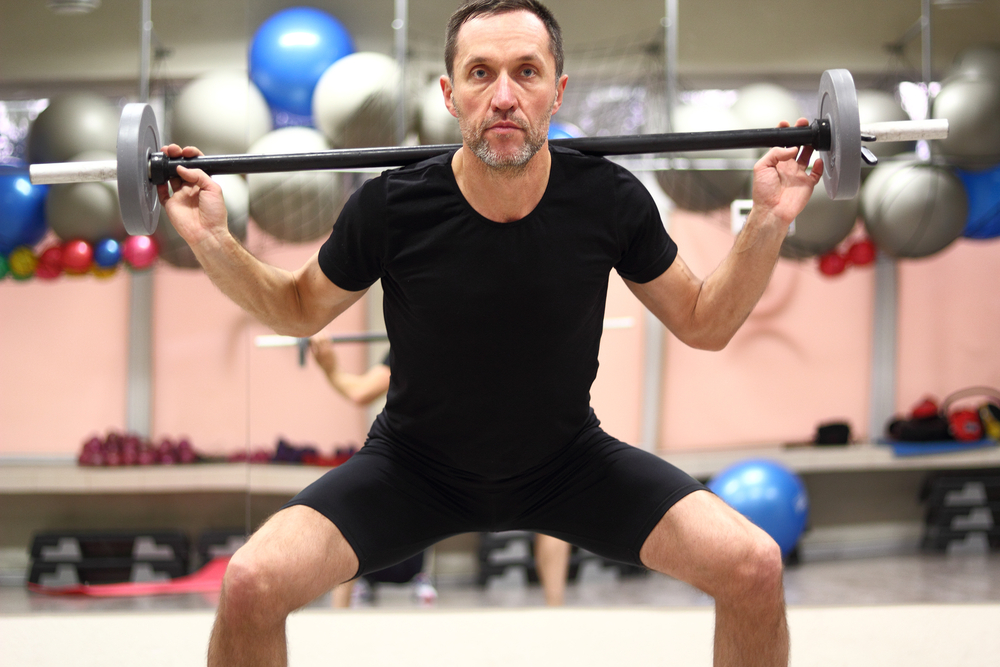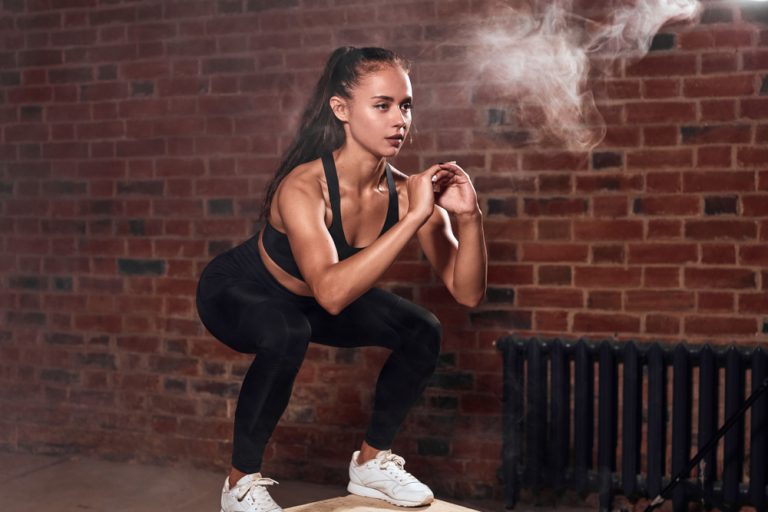The squat jump is the ultimate combination exercise and it’s a real ass-kicker to boot, taking the mechanics of a squat and adding the power component of a jump. Some coaches have publically praised the jump squat for its ability to effectively develop lower body power, yet to the mainstream lifter, it remains in relative exercise obscurity.
Squat jump
The main issues are the squat’s jump awkward setup (placing a loaded barbell on your back and jump), and seemingly steep learning curve. For the former, tools like weight plates, dumbbells, weight vests, and sandbags are much easier to handle while allowing for more natural jumping mechanics.
Regarding the latter, the squat jump is a very simple movement to learn, especially when compared to the clean or snatch a there’s no need to catch the weight. Just grab a weight and jump – it can’t get much simpler than that.
Increased power
Squat jump has been shown to improve lower body power output over resistance training. Increased power generally translates to an increased 1RM.
To that end, the absence of power movements in your training could be the limiting factor in your squats. If you’re not training in some way to create a force as fast as possible, then you’re limiting the firing rate of muscle action and as a result, leaving the weight on the rack. The quicker you can recruit your entire lower body into the squat, the greater the force you can produce, and ultimately the more weight you can move.

Ready to start?
If you can jump and it doesn’t hurt, you’re safe to squat jump. However, once you begin loading the lift, the risk for injury is greatly amplified. Learning proper landing mechanics becomes a top priority.
- Follow a normal squat pattern with your feet shoulder-width apart.
- Once you reach squat depth, explode up.
- Upon landing, focus on keeping the chest up and track your hips back behind you.
- Absorb the impact – don’t try to take the blunt force. Make sure that your knees don’t cave in.
- If there’s any knee deviation inside of the midline of the ankle, don’t continue. Get your glutes firing first.
Level UP
Once you’ve mastered the unloaded landing, using a weighted vest is the next progression. The weighted vest is the most “natural” as it allows you to perform a loaded jump without restricting arm motion.
Perform the same squat jump but now absorb the load when landing.
After landing, brace and absorb the stress into an athletic stance and repeat. After getting proficient with the weight vest you can move back to the dumbbells or sandbags.
This is essentially the same movement as before only now you hold the weights when you land. A combination of the two (weights plus vest) may be used to reach the prescribed load.
Barbell squat jump
The final progression is the actual barbell squat jump. Using a barbell allows exceptionally heavier loads to be used versus dumbbells and weight vests.
The bar should remain on the upper back. Pulling down on the bar as you jump keeps it from flying up and crashing down on your neck. Use a bar pad if needed to disburse the load.

Barbell squat jump remove all arm action from the movement. However, you gain true lower body power development in return, so there’s a lot to gain if the correct load technique is used.
Squat jump is an outstanding way to develop lower body power while effectively training triple extension of the hips, knees, and ankles. This can translate to both new PR’s in the gym and big results on the field.
From a bang for your buck perspective, the power development derived from a squat jump can save hours in unnecessary training as you get the resistance training effect of squatting while developing dynamic power with the jump, all in a short learning curve.
This not only sets squat jump apart from other power movements but makes them a must-learn exercise for your repertoire. Just remember to ensure proper landing mechanics and to select an appropriate load.






